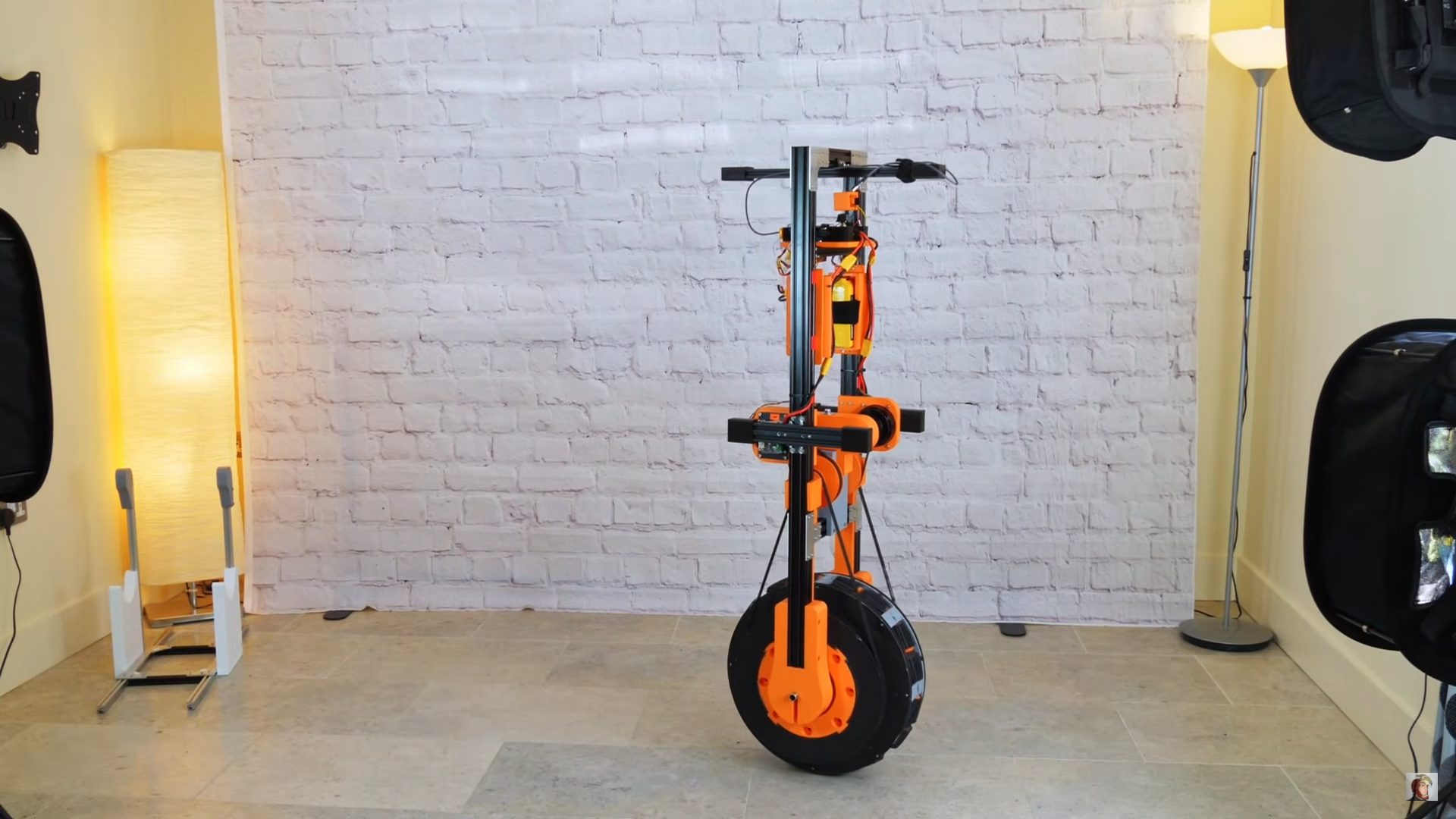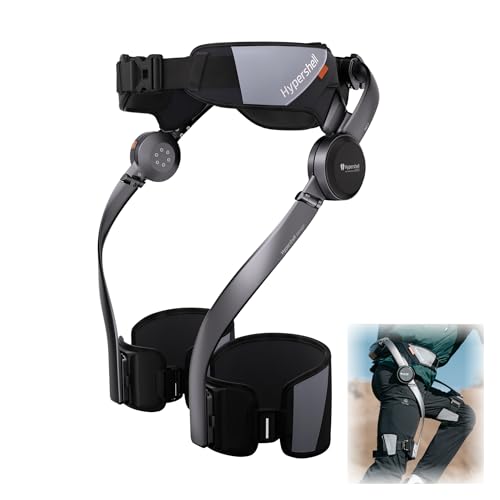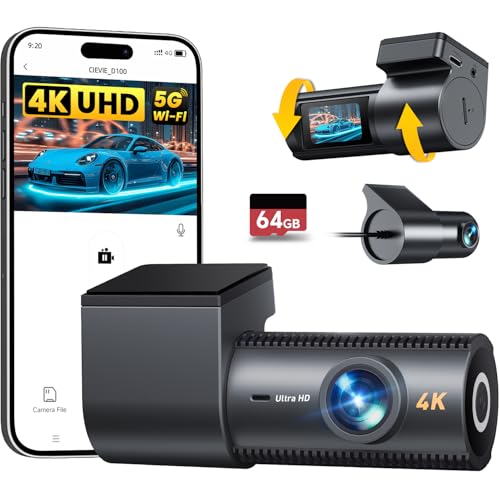James Bruton ranks among the most innovative DIY engineers in the world, creating impossible vehicles that challenge what we think wheels can do. His latest creation—a self-balancing, omnidirectional unicycle robot—showcases his engineering brilliance through creative problem-solving and careful design. This remarkable single-wheeled machine demonstrates principles of physics, electronics, and mechanical engineering in action. As we explore this project step by step, we’ll see how Bruton transformed simple materials into a complex, functioning robot that defies conventional transportation design. It’s a perfect example of the kind of out-of-the-box invention most people don’t even realize exists.
The Single-Wheel Concept

Bruton’s smart unicycle represents a radical departure from typical wheeled vehicles. Unlike his previous projects, like the Star Wars Speeder Bike or the Ball-Wheeled Bike, this creation focuses on achieving balance and movement with just one wheel. This design challenge required tackling complex physics problems, mainly how to keep a single-wheeled vehicle upright while in motion. Bruton deliberately built this wheel at twice the scale of his previous projects to make balancing easier. This follows a fundamental physics principle: larger objects with lower centers of gravity are naturally more stable than smaller ones. By scaling up, Bruton made the engineering challenge more manageable while maintaining the project’s innovative spirit.
“Something like this is not a practical form of transport in any way, but it’s had eight million views on YouTube, so it’s done rather well,” he said.
3D Printing Revolution

3D printing technology proved essential for bringing Bruton’s unicycle concept to life. This manufacturing method allowed him to design and produce custom parts that would be impossible to create through traditional means. The complex gears, housings, and mechanical components required precise specifications that only 3D printing could deliver affordably. By printing many components himself, Bruton gained complete freedom to iterate and modify designs as needed throughout the building process. This flexibility proved crucial for troubleshooting issues that arose during testing. The unicycle project demonstrates how 3D printing has revolutionized DIY engineering, enabling makers to produce professional-quality mechanical systems without industrial manufacturing facilities.
Wheel Within Wheels

The core innovation in Bruton’s unicycle lies in its unique wheel design – a large wheel composed of eight smaller wheels arranged around its circumference. Each small wheel contains two TPU tires that help control the robot’s inertia for smooth movement. This “wheel within wheels” approach enables the vehicle’s omnidirectional capabilities, allowing it to move in any direction without traditional steering mechanisms. The main wheel required precisely engineered outer recesses to house the complex system of gears and pulleys that coordinate movement. Bruton carefully designed a central gear mechanism with intermediate pulleys that integrate with a central pulley, creating a unified system. The entire assembly mounts on plywood with specialized bearings that allow the middle gear to spin freely while a retainer holds everything in position.
Gear Engineering

The unicycle’s impressive performance relies on a meticulously engineered gear system. Bruton designed interlocking gears that mesh perfectly together while the two wheel housings secure everything in place. This gear arrangement transfers power efficiently from the motor to the wheels while maintaining the precise timing needed for balanced operation. Each gear required exact specifications to prevent slipping or binding during operation. The engineering challenge involved calculating proper gear ratios to achieve the desired speed and responsiveness. This system represents the mechanical heart of the unicycle, translating electronic control signals into physical movement in a reliable, predictable way.
Friction Reduction

To ensure smooth operation, Bruton incorporated an extensive bearing system throughout the unicycle. The design includes eight pairs of idlers, each equipped with two bearings on each assembly. These bearings dramatically reduce friction as the wheels turn, allowing for fluid movement in all directions. The bearing placement proves particularly important when the unicycle changes direction, enabling buttery-smooth transitions even when switching to reverse motion. This attention to friction reduction represents a crucial aspect of the project’s success, as excess friction would drain battery power and create jerky, unpredictable movement. The carefully planned bearing system demonstrates Bruton’s thorough understanding of mechanical engineering principles
Structural Framework

While the wheel mechanisms presented complex challenges, Bruton found the unicycle’s framework relatively straightforward. He constructed the main body using aluminum extrusion – a versatile building material that provides an excellent strength-to-weight ratio. This metal framework supports all components while withstanding the forces generated during operation. The design places the electronics package at the top of the frame for easy access, with two 50-volt batteries positioned just below. This arrangement creates a balanced weight distribution essential for the unicycle’s stability. The aluminum structure serves both functional and aesthetic purposes, giving the robot a polished, professional appearance while providing the necessary rigidity for reliable performance.
Balance Control Systems

The unicycle’s ability to balance itself represents perhaps its most impressive feature. Bruton implemented a sophisticated electronic control system centered around an integrator circuit that continuously adjusts wheel power based on the unicycle’s position. When external forces push the wheel, the control system immediately detects this disturbance and applies appropriate counter-force to return the unicycle to its balanced position. This self-correction happens instantly and continuously, creating the illusion of natural balance. Later in development, Bruton added remote control capabilities, allowing the unicycle to be driven from a distance while maintaining its self-balancing abilities. This electronic brain makes mechanical engineering truly come alive.
Future Applications

Bruton’s smart unicycle represents more than just an impressive standalone project – it serves as a stepping stone toward even more ambitious creations. He’s already planning his next DIY challenge: a rideable vehicle featuring a passive omni wheel positioned perpendicular to an active omni wheel. Having solved the fundamental problems of motion and balance with the unicycle project, Bruton has established a foundation of knowledge that will make future projects more achievable. This ongoing evolution of ideas demonstrates the iterative nature of engineering innovation. Each project builds upon lessons learned from previous work, pushing the boundaries of what’s possible in DIY robotics and transportation design.




























